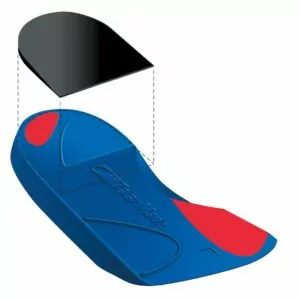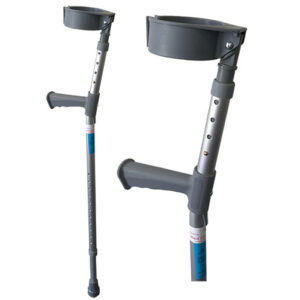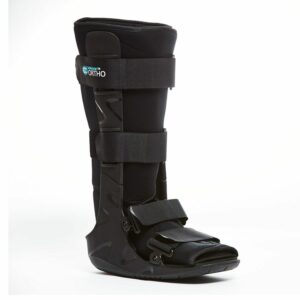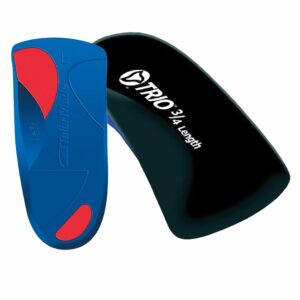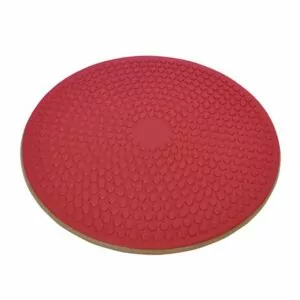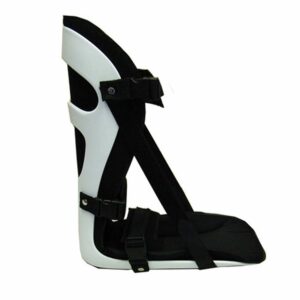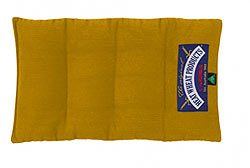Achilles Tendonitis (Tendinopathy)
Updated:
(Also known as Achilles Tendinitis, Achilles Tendinopathy, Achilles Tendinosis)
N.B. Although the lastest research suggests that ‘Achilles tendinopathy’ is the more appropriate term to describe overuse injuries to the Achilles tendon (since an inflammatory response is often absent), we will use the term ‘Achilles tendonitis’ in this document as it is more commonly known.
What is Achilles tendonitis?
Achilles tendonitis (tendinopathy) is a relatively common overuse condition of the Achilles tendon. It is characterised by microscopic tissue damage, degeneration and often pain and swelling in the Achilles tendon.
The muscle group at the back of the lower leg is commonly called the calf. The calf comprises of 2 major muscles, one of which originates from above the knee joint (gastrocnemius), the other of which originates from below the knee joint (soleus). Both of these muscles insert into the heel bone via the Achilles tendon (figure 1).
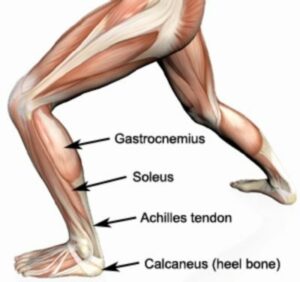
During contraction and stretch of the calf, tensile and compressive forces are placed upon the Achilles tendon. When these forces are excessive due to too much repetition, prolonged or high force, damage to the tendon occurs.
Achilles tendonitis (tendinopathy) is a condition involving damage to the tendon with subsequent degeneration and disorganisation of collagen fibres (a protein giving the tendon its tensile strength). This may also be accompanied by swelling, inflammation or thickening of the tendon. These changes impair the tendon’s ability to withstand stress.
Achilles tendonitis can be classified as ‘insertional’ or ‘mid tendon’ based on the location of the changes within the tendon.
Phases of Achilles Tendonitis (Tendinopathy)
Due to an increase in load on the tendon beyond what it can withstand, Achilles tendonitis (tendinopathy) may progress through 3 primary phases:
- Reactive Phase – This phase entails a short term adaptation to increasing tendon load, that thickens the tendon, reduces stress and increases stiffness of the tendon. Changes to the tendon during the reactive phase are typically reversible (with appropriate physiotherapy management). During this phase, the tendon’s structure remains intact.
- Dysrepair Phase – This phase occurs if the Achilles tendon continues to be loaded excessively during the reactive phase. The dysrepair phase is characterised by changes and breakdown in the tendon structure. Formation of new nerves and blood vessels occur, resulting in heightened sensitivity and pain within the tendon. Appropriate management is essential during this phase to prevent further degradation of the tendon.
- Degenerative Phase – This stage occurs in response to chronic tendon overload. Further changes and breakdown in the tendon structure take place. Collagen becomes disorganised. Additional growth of new blood vessels and nerves occur. Areas of cell death occur. The tendon may appear thickened or nodular and be at a higher risk or rupture.
Causes of Achilles tendonitis
Achilles tendonitis (tendinopathy) most commonly occurs due to repetitive or prolonged activities placing tensile or compressive forces on the Achilles tendon beyond what it can withstand. This may occurs in association with excessive:
- walking or running (particularly up or down hills or stairs, or, on uneven surfaces)
- jumping or hopping activities
- weight lifting (e.g. loaded calf raises)
- calf stretching
Occasionally, the condition may occur suddenly due to a high force going through the Achilles tendon beyond what it can withstand. This may be due to a sudden acceleration, a forceful jump or a direct blow to the Achilles. Achilles tendonitis may also occur following a calf or Achilles tear, following a poorly rehabilitated sprained ankle or in patients with poor foot biomechanics (e.g. flat feet) or inappropriate footwear. In athletes, this condition is commonly seen in running sports such as marathon, triathlon, football and athletics.
Signs and symptoms of Achilles tendonitis
Patients with this condition typically experience pain or discomfort in the Achilles tendon (i.e. heel region – Figure 1). In less severe cases, patients may only experience an ache or stiffness in the Achilles region that increases with rest (typically at night or first thing in the morning) following activities which place stress on the Achilles tendon. These activities typically include walking or running excessively (especially uphill or on uneven surfaces), jumping, hopping, performing heel raises or calf stretches.
The pain associated with this condition may also warm up with activity in the initial stages of injury. As the condition progresses, patients may experience symptoms that increase during sport or activity, affecting performance. Pain may also increase when performing a calf stretch or heel raise (i.e. rising up onto tip toes). In severe cases, patients may walk with a limp or be unable to weight bear on the affected leg.
Patients with Achilles tendonitis may also experience swelling, tenderness on firmly touching the Achilles tendon, weakness and sometimes palpable thickening of the affected Achilles tendon when compared with the unaffected side.
Diagnosis of Achilles tendonitis
A thorough subjective and objective examination from a physiotherapist is usually sufficient to diagnose an Achilles injury such as Achilles tendonitis. Occasionally, further investigations such as an Ultrasound, X-ray or MRI scan may be required to assist with diagnosis, rule out other conditions and assess the severity of injury.
Prognosis of Achilles tendonitis
Most patients who have had Achilles tendonitis for a short period of time (and are in the reactive phase) heal well with appropriate physiotherapy and return to normal function within a number of weeks. As the condition duration and severity increases and progresses to the dysrepair and degenerative phases, recovery can be a lengthy process and may take many months of rehabilitation. Patients with a degenerative tendinopathy have an increased risk of a sub-optimal outcome. Early physiotherapy treatment is vital to hasten recovery in all patients with this condition.
Treatment for Achilles tendonitis

Members Only ContentBecome a PhysioAdvisor Member to gain full access to this exclusive content. For more details see Become a Member. Already a member? Login Now
Contributing factors to the development of Achilles tendonitis
There are numerous factors which can predispose patients to developing this condition. These need to be assessed and corrected with direction from a physiotherapist. Some of these factors include:
- joint stiffness (particularly the ankle)
- muscle tightness (particularly the calf)
- inappropriate or excessive training or activity
- inadequate recovery periods from training or activity
- poor biomechanics
- poor foot posture (i.e. flat feet or high arches)
- inappropriate footwear
- change of training surface
- inadequate warm up
- muscle weakness (especially the calf)
- poor proprioception or core stability
- being overweight
- inadequate rehabilitation from a previous lower limb injury (e.g. ankle sprain, calf strain etc.)
- male gender
- type 2 diabetes
Physiotherapy for Achilles tendonitis
Physiotherapy treatment for patients with an Achilles injury is vital to hasten the healing process, ensure an optimal outcome and reduce the likelihood of recurrence. Treatment may comprise:
- soft tissue massage
- electrotherapy (e.g. ultrasound)
- the use of crutches, heel wedges, a protective boot or night splint
- joint mobilisation
- ice or heat treatment
- exercises to improve strength, flexibility, core stability and balance
- education
- anti-inflammatory advice
- activity modification advice
- hydrotherapy
- biomechanical correction (e.g. the use of orthotics)
- footwear advice
- a gradual return to activity program
- a gradual return to running program
Other intervention
Despite appropriate physiotherapy management, some patients with this condition do not improve. When this occurs the treating physiotherapist or doctor will advise on the best course of management. This may include pharmaceutical intervention, corticosteroid injection, autologous blood injection, sclerosing injection or referral to appropriate medical authorities who will advise on any interventions that may be appropriate to improve the condition. A review with a podiatrist for possible orthotics may also be indicated.
Exercises for Achilles tendonitis
The following exercises are commonly prescribed to patients with this condition. You should discuss the suitability of these exercises with your physiotherapist prior to beginning them. Generally, they should be performed provided they do not cause or increase symptoms.
Your physiotherapist can advise when it is appropriate to begin the initial exercises and eventually progress to the intermediate, advanced and other exercises. Unless otherwise stated, the addition of exercises or progression to more advanced exercises should take place provided there is no increase in symptoms.
Initial Exercises
Calf Stretch with Towel
Begin this stretch in long sitting with your leg to be stretched in front of you. Your knee and back should be straight and a towel or rigid band placed around your foot as demonstrated (figure 2). Using your foot, ankle and the towel, bring your toes towards your head until you feel a stretch in the back of your calf, Achilles tendon or leg. Hold for 5 seconds and repeat 10 times at a mild to moderate stretch provided the exercise is pain free. Perform 2 – 3 times daily.
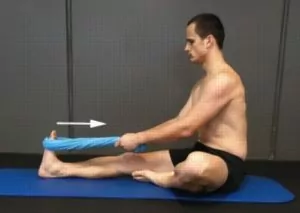
Resistance Band Calf Strengthening
Begin this exercise with a resistance band around your foot as demonstrated and your foot and ankle held up towards your head (figure 3). Slowly move your foot and ankle down against the resistance band as far as possible and comfortable without pain, tightening your calf muscle. Very slowly return back to the starting position. Repeat 10 – 20 times provided the exercise is pain free. Perform 2 – 3 times daily.
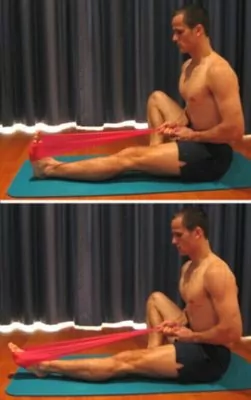
Intermediate Exercises

Members Only ContentBecome a PhysioAdvisor Member to gain full access to this exclusive content. For more details see Become a Member. Already a member? Login Now
Advanced Exercises

Members Only ContentBecome a PhysioAdvisor Member to gain full access to this exclusive content. For more details see Become a Member. Already a member? Login Now
Other Exercises

Members Only ContentBecome a PhysioAdvisor Member to gain full access to this exclusive content. For more details see Become a Member. Already a member? Login Now
Rehabilitation Protocol for Achilles Tendonitis

Members Only ContentBecome a PhysioAdvisor Member to gain full access to this exclusive content. For more details see Become a Member. Already a member? Login Now
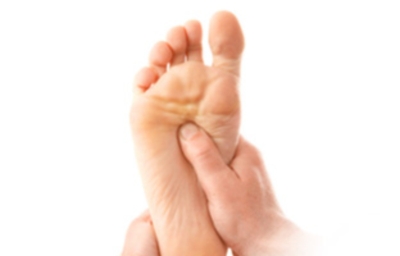 Find a Physio
Find a Physio
Find a physiotherapist in your local area who can treat an Achilles injury.
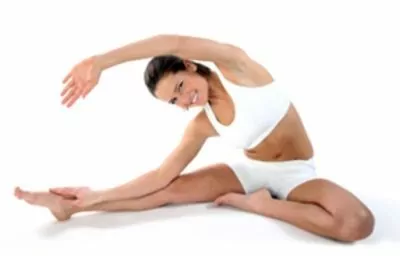 More Information for Achilles Tendonitis
More Information for Achilles Tendonitis
- Calf Flexibility Exercises.
- How to use Crutches.
- Ice or Heat?
- R.I.C.E. Regime.
- Return to Running Program.
- Do i need Orthotics?
- Achilles Tendon Taping.
- Understanding Pain
- Achilles & Heel Diagnostic Guide.
Physiotherapy products for Achilles tendonitis
Some of the most commonly recommended products by physiotherapist for patients with this condition include:
To purchase physiotherapy products to assist with rehabilitation of an Achilles injury click on one of the above links or visit the PhysioAdvisor Shop.
+ 11 References
PhysioAdvisor relies on credible scientific sources (ideally from high quality randomised controlled trials, when available) to guide our content creation. Read about our sourcing guidelines and how we create trusted content via our editorial policy.
- Malliaras P, Barton CJ, Reeves ND, Langberg H. Achilles and patellar tendinopathy loading programmes: a systematic review comparing clinical outcomes and identifying potential mechanisms for effectiveness. Sports Med. 2013;43(4):267-286.
- Beyer, Rikke, et al. “Heavy Slow Resistance Versus Eccentric Training as Treatment for Achilles Tendinopathy A Randomized Controlled Trial.” The American journal of sports medicine (2015): 0363546515584760.
- Khan KM, Cook JL, Bonar F, Harcourt P, Astrom M. Histopathology of common tendinopathies. Update and implications for clinical management. Sports Med. 1999;27:393–408
- Ebonie Rio; Dawson Kidgell; G Lorimer Moseley; Jamie Gaida; Sean Docking; Craig Purdam; Jill Cook, Changing the Way we Think About Tendon Rehabilitation A Narrative Review Br J Sports Med. 2016;50(4):209-215.
- Brukner et al (2012). Brukner & Khan’s clinical sports medicine (4th ed.), 783-796. Australia: McGraw Hill Education.
- Cook JL1, Purdam CR. Is tendon pathology a continuum? A pathology model to explain the clinical presentation of load-induced tendinopathy. Br J Sports Med. 2009 Jun;43(6):409-16.
- Alex Scott, R. P. (2011). Conservative treatment of chronic Achilles tendinopathy. CMAJ , 183(10): 1159–1165.
- BC Physical Therapy Tendinopathy Task Force: Dr. Joseph Anthony, Allison Ezzat, Diana Hughes, JR Justesen, Dr. Alex Scott, Michael Yates, Alison Hoens. Achilles Tendinopathy Toolkit. A Physical Therapy Knowledge Broker project supported by: UBC Department of Physical Therapy, Physiotherapy Associaton of BC, Vancouver Coastal Research Institute and Providence Healthcare Research Institute. 2012
- Rio, Ebonie, et al. “Tendon neuroplastic training: changing the way we think about tendon rehabilitation: a narrative review.” British journal of sports medicine 50.4 (2016): 209-215.
- Alfredson, Håkan, and Jill Cook. “A treatment algorithm for managing Achilles tendinopathy: new treatment options.” British journal of sports medicine 41.4 (2007): 211-216.
- Achilles Tendinopathy – https://www.physio-pedia.com/Achilles_Tendinopathy
Become a PhysioAdvisor Member
-
 Individual Membership (12 Months)$59.95 for 1 year
Individual Membership (12 Months)$59.95 for 1 year -
 Individual Membership (3 Months)$39.95 for 3 months
Individual Membership (3 Months)$39.95 for 3 months -
 Individual Membership (Yearly)$49.95 / year
Individual Membership (Yearly)$49.95 / year -
 Individual Membership (Monthly)$15.95 / month
Individual Membership (Monthly)$15.95 / month

Link to this Page
If you would like to link to this article on your website, simply copy the code below and add it to your page:
<a href="https://physioadvisor.com.au/injuries/achilles-heel/achilles-tendonitis”>Achilles Tendonitis (Tendinopathy) – PhysioAdvisor.com</a><br/>Detailed physiotherapy information on Achilles Tendonitis including: symptoms, causes, diagnosis, treatment, exercises, physiotherapy products and more...
Return to the top of Achilles Tendonitis (Tendinopathy).

